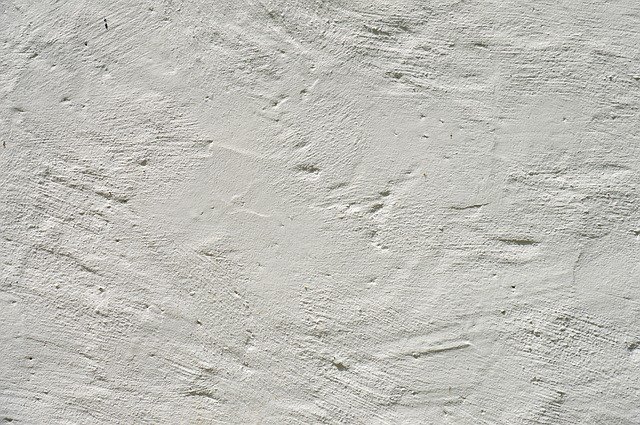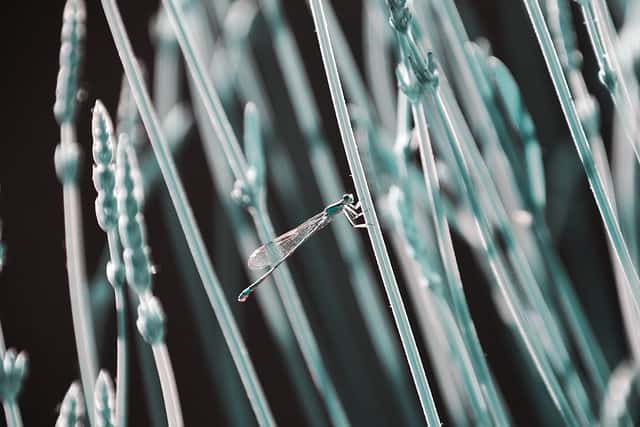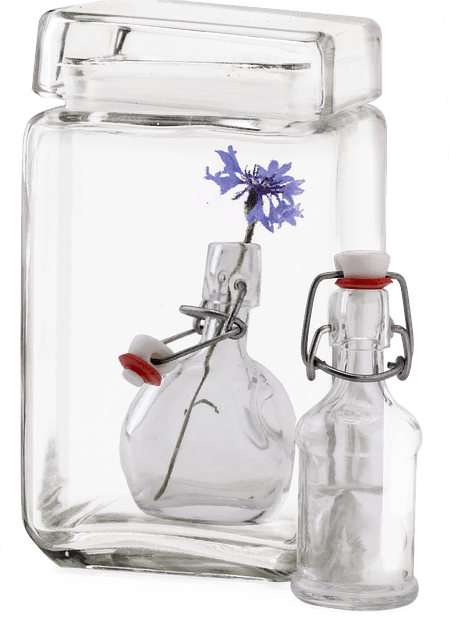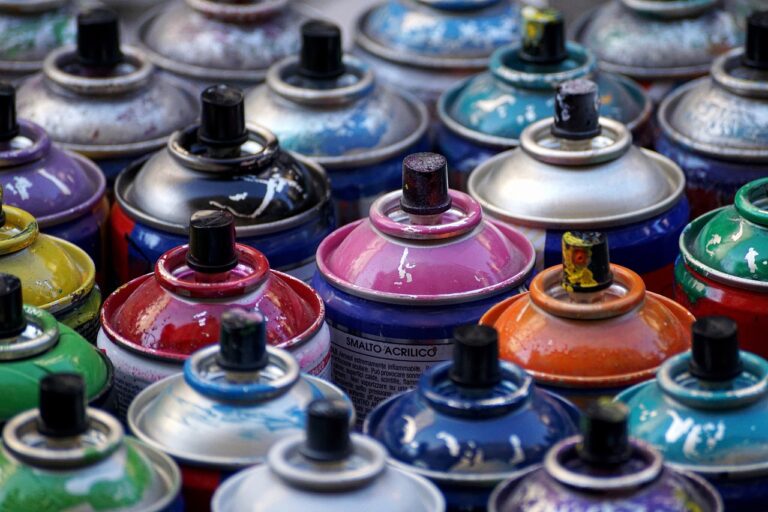How to Remove Paint from Concrete without Chemicals
For most homeowners with pets and small children, removing paint from concrete (such as in the garage) requires using non-chemical methods.
You can remove paint from concrete without chemicals using pressure washers, soda blasters, paint strippers (biodegradable and non-toxic), and Soy Gel – they’re safe and eco-friendly – may require a degreaser for concrete.

A pressure washer and water will work effectively to clean your concrete surfaces. Let the surface dry and then apply some paint stripper (optional) – finally, scrub and wash the area. See Also: How to Paint Concrete.
Method #1 – For Small Spots
So, if you’ve dripped paint on the garage floor or concrete driveway cleaning it must be time-consuming and tough to clean your garage and patio.
Step #1 – Concrete surface Preparation
You can maintain the low-maintenance and inexpensive concrete floors – also check out these concrete sealer using muriatic acid – you may need to use some hard-bristled brush but no harsh detergent.
What you’ll require:
- Pole and Paint Roller
- Mask
- Floor Scraper
- Chemical Resistant Gloves
- Stripper
- Old Shoes
The first step, as outlined in the title above, will be concrete surface preparation. This will require you to use a shop vacuum or broom for removing all the debris and dirt.
Equally important, is that the brush or scraper will help remove all the loose paint that’s stuck on the garage or patio concreate. This method will remove oils, adhesives, and paint from tile flooring.
Step #2 – Concrete surface Preparation
The next step will involve using a paint stripper on your concrete surface. The stripper will depend on the kind of paint being removed – for example, are they oil-based or water-based paint.
The aim is to ensure that it’s a clean machine – make sure the concrete is free from contaminants, coatings, curing components, paint, grease, oil, dirt, and dust.
You can use this “water drop test” to make sure you get a clean concrete surface – this will simply require that you put some water on the concrete floor.
Step #3 – Apply Paint Stripper
As we’ve noted above, cleaning the concrete surface – removing dirt and debris with the contractor’s broom. You can also use a soap-water solution (mild) for removing all soil.
Though, if you’re dealing with paint stains on your patio, driveway, or garage – get yourself some effective paint stripper. But first, allow the surface to dry fully.
What you’ll require:
- Paint Stripper
- Putty Knife or Paint Scraper
- Protective Gear
- Industrial Sodium Bicarbonate
- Scrub Brush
- Dustpan & Broom
- Bucket
The polypropylene bristles in your deck brush will be useful when you don’t want to kneel on the wet concrete. A pressure washer or garden hose may also help rinse any excellent grime or soap suds.
For the paint stripper, these strippers are made either to remove oil-based paints or water-based paints – but if you’re not sure about the paint type, get the oil-based stripper.
Ensure to adhere to the producer’s instructions including wearing protective gear as this will protect your skin from any harsh chemicals.
Finally, leave the stripper for between 1 – 9 hours to effectively work on the paint layers.
Step #4 – Scrub and Clean your concrete Floors
Wear some great rubber gloves and take the stiff-bristled scrub brush to work on your mildewed area. However, you’ll require to use some chlorine bleach if the surface has heavy mildew stains.
So, scrub your concrete surfaces using a scraper or some wire scrub brush – this will help eliminate all your loosened paint. But for patios or driveways (outdoor concrete) – use a pressure washer.
Repeat the applying of the paint stripper and concrete scrubbing process if required to fully remove the paint from concrete without chemicals.
Finally, get pressure or power washer that’ll assist remove all the paint stripper traces. Further, clean all the paint drips and drops from the concrete to avoid stains and spots.
See Also: Sprayer for Latex Paint
Method #3 – For Tough Concrete Paint Spots
Step #1 – Pressure Wash the Surfaces
A pressure washer is the most common recommendation for most people seeking to clean tough concrete paint spots. This may mainly work best for outdoor or wet spaces.
Definitely, epoxy paints (compared to latex or Acrylic paint) will be much easier to clean. Use the narrow tip of the pressure washer to begin working on the paint on the concrete.
But ensure to keep caustic since the water jet from the pressure washer may equally damage materials that are soft. So, use your pressure washer wand to maintain the right jet pressure.
But, when the paint on the concrete won’t come off, you’ll require to use a hard bristle brush to damage the paint spots. Finally, use your pressure washer.
See Also: Pressure Washer for Paint Removal
Step #2 – Using a Floor Grinder
When the pressure washer fails to fully remove the paint, its time to use your walk-behind concrete grinder – particularly those with the diamond-grinding wheel.
Take precaution since the floor grinder will most definitely; leave behind some marks on the floor. Thus, only employ this technique if you’re ready to cover up the grinder marks.
But you may install a wire-brush wheel that’s softer on your grinder and check if it’ll remove the paint from the concrete devoid of grinder marks – start it out with inconspicuous places.
Step #2 – Use Soy-based Cleaners
Using the soy-based cleaners is technically not using chemicals in cleaning the paint on concrete. The gel cleaners are soy-based and hence considered non-toxic.
Therefore, the non-toxic nature of the cleaner guarantees that it is environmentally friendly. Give the cleaner enough time (as outlined by label instructions) and wipe clean to remove paint.
Luckily, since these cleaners come as a gel, it is easy to contain them in a distinct area with the paint. So, try the Dumond Chemicals 3332 cleaner – its Biodegradable, substrate, and user-safe.
These soy-based cleaners are eco-friendly and innovative for the removal of paint on lead encapsulating, lead abatement, graffiti removal, and masonry or stone care.
Method #4 – For Large Areas
Step #1 – Soda blasting
a.
Soda blasting (using friction) will be effective for removing paint on larger areas – on the other hand, paint stripers will be great for smaller concrete paint areas.
In the soda blasting method, you employ baking soda (an eco-friendly solution) like a scouring agent. Blasting easily removes surface corrosion, gasket material, oils, grease, coatings, and paint.
The method will be great for concrete surfaces in addition to composites, masonry, wood, plastics, alloys, and metals without causing surface distortion or damage.
Is soda blasting better than sandblasting? Well, soda blasting is defined as non-abrasive – it’ll readily shatter with impact (great for glass and plastics). But media blasting or sandblasting is harsher.
b.
So, its time to get a suitable blasting unit – I recommend getting a pot blaster. This may be available in your local store – where you’ll also get the sodium bicarbonate.
Note that the regular baking powder will be too fine to effectively work as a soda blaster. Thus, get the special type of soda blaster is you want to use the regular sodium bicarbonate.
c.
Now, blast your painted concrete surface. Ensure to hold the blaster nozzle around 1 – 1.5 feet away from your ground. But ensure to put on your respirator to prevent inhaling fine particles.
Move the sand-blaster nozzle slowly over the painted concrete – this will guarantee all the paint is removed. Don’t blast around vegetation since the soda may have high pH.
Step #2 – Use Paint Remover – If you still have stubborn concrete paint its time to try paint removers. Check how to remove acrylic paint from concrete using the all-purpose paint stripper.
Conclusion
On how to remove paint from concrete without chemicals, use a sandblaster, soda blaster, pressure washers, floor grinders – but remove the remaining residue.





